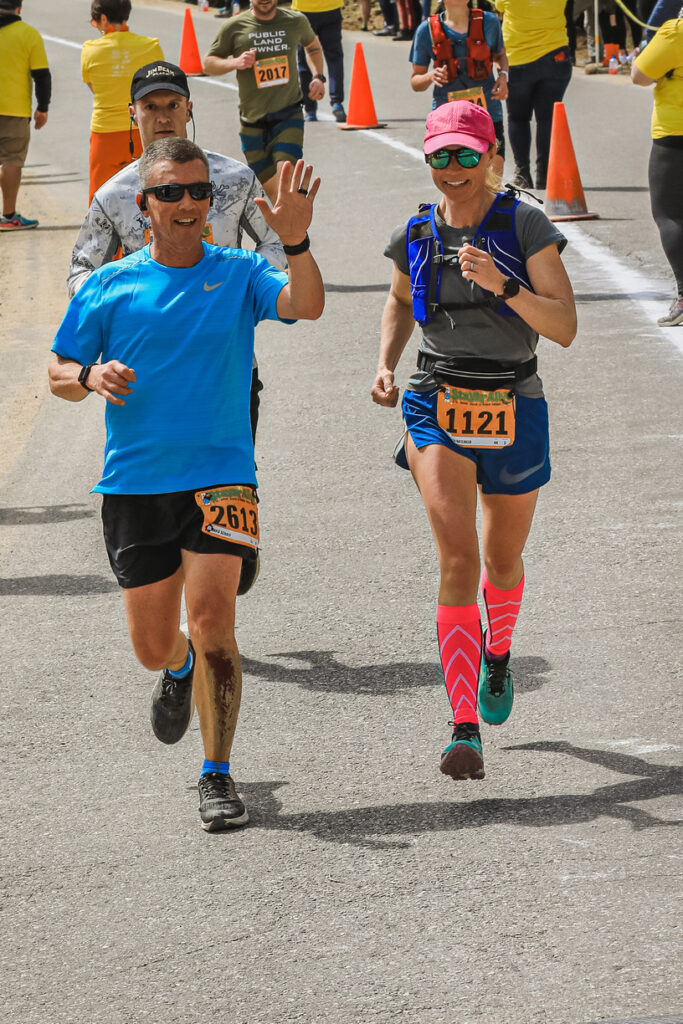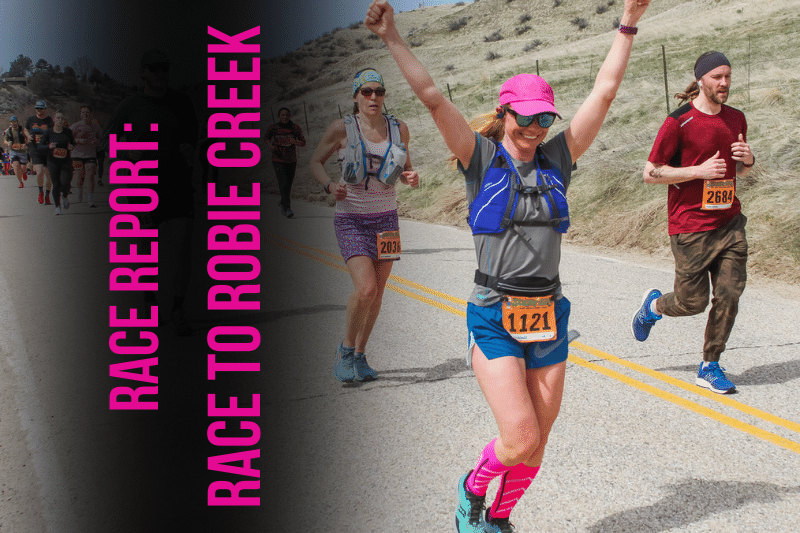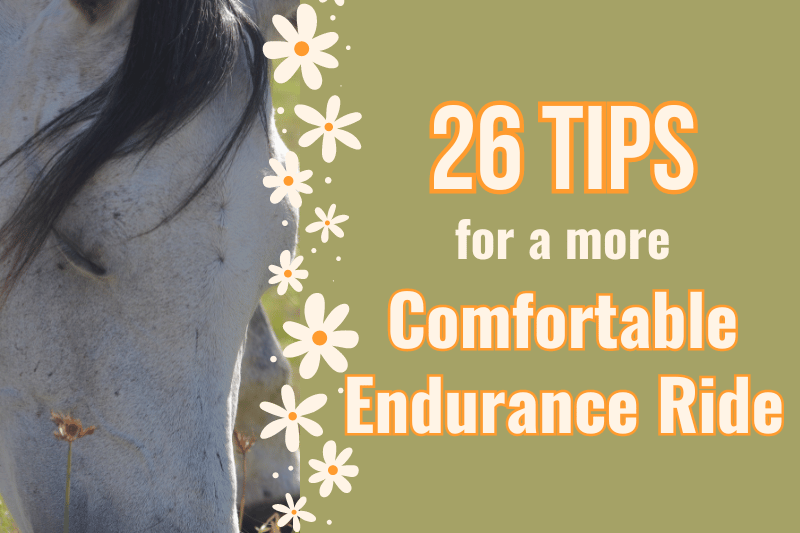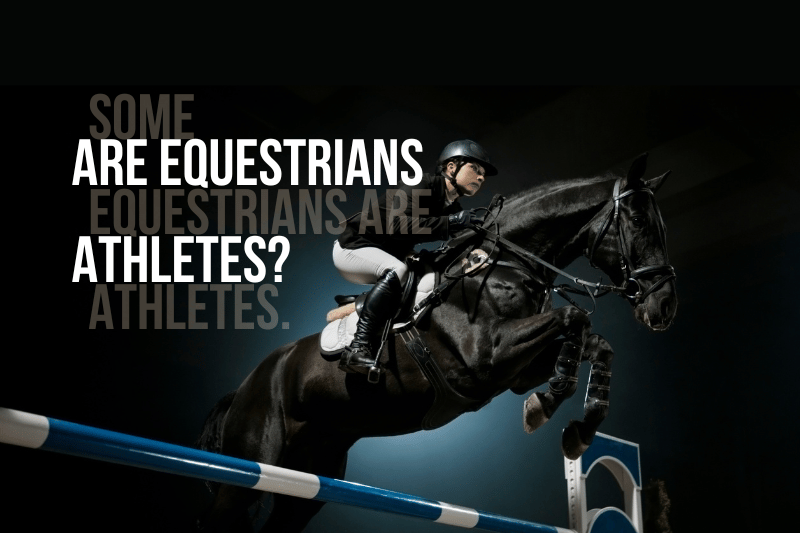A brisk wind swept across Fort Boise Park, raising goosebumps on the arms of 1,700 athletes dressed to run. Stayin’ Alive blasted from the speakers. Friends and family milled about, snapping photos. Runners bounced on their toes, adjusted vests, eyed their watches.
“Go!”
The crowd surged. Forward motion was almost imperceptible at first. Then there was room to walk, then finally to jog. Somewhere out front, the leaders were breaking, but Mr. Sweaty and I remained trapped in the enthusiastic mid-pack. We wound through a few streets, dodging the heels of runners around us, before hitting a straightaway.
Gradually, the throng shook apart. Ahead rose the beginning of the long hill. Behind streamed hundreds and hundreds of smiling athletes. Cowbells clattered from the roadsides. I found enough clear space to hit an 8:30 pace, and took it.
Robie!

People ask why I run.
There are many answers: for health, for longevity, for rider fitness, for the ability to get myself out of a bad situation, like getting dumped off my horse 12 miles from the trailer.
The best and truest answer, though, is that I run for the sheer joy of it. Running is a celebration of what my body can do. That joy was my dominant impression of last weekend’s Race to Robie Creek.
“Robie,” as it’s affectionately known, is widely considered the toughest half-marathon in the northwest. Thousands of people clamber for a limited number of bibs to run 13.1 miles from the edge of Boise, up a gravel road to Aldape Summit, then sharply down to Robie Creek Park. Runners ascend 2,100 feet over the first nine miles, then drop 1,700 in the remaining four.
Over the 20+ years I’ve lived in the Boise area, I’ve admired Robie from afar. Cool event, I thought, but not really on my radar.
This year, it was my goal race.
How did that happen?

The street rose beneath us. Here we were, on the infamous Robie climb. I leaned slightly into it, felt the muscles of my posterior chain settle into the familiar rhythm. Not fast, not bouncy, just a steady, gentle push that felt almost effortless.
Around us, some participants dropped to a walk. We dodged our way up the first, steep grade. At the top, cheering spectators offered freshly sizzled bacon and beer. We laughed and passed, grabbed a sip of water instead, gained speed as the road leveled off.
Around mile three, the footing turned to gravel. I reached it with relief, grateful for the softer surface beneath my achy feet. More than 5K down, plus the first climb, and it barely felt like we’d warmed up.
What is this sorcery?

Two years ago, I was just beginning to run regularly. I approached it as a fitness experiment, with zero ambition of entering races. I worked up to running 15 minutes straight, then doing unofficial 5Ks at a whopping 11-minute mile pace. It felt like an accomplishment then, and I suppose it was.
Last year, I entered a trail 10K. My “go all day” pace increased to a 10-minute mile. I started looking for more. I ran a half-marathon last July, and fell in love.
Now, ten months later, I was diving into the meat of a race I thought I’d never do. The road rose, and I rose with it, elated to feel the miles falling away behind me as a seemingly endless well of energy buoyed within.
This was the reward for all those training miles, those uphill slogs, those intervals and long runs! They don’t always come together so well ~ some race days are rough ~ but this time felt like magic.
Only once on the 9-mile climb did my quads begin to burn. I walked a couple hundred feet there, then again at the final, steep half-mile near the summit. (Pretty much everyone walks that part.)
Then, the descent!
Our footing had turned to ice and snow, topped with a layer of slush and rivulets of melt. Tighten core, step lightly, dance on down.
Slightly behind me, Mr. Sweaty took a bad step and fell. He got up with dozens of diagonal slashes, bleeding from knee to ankle, and ran on. I missed the whole thing, only noticing that he’d dropped back. I carried on, oblivious, confident he would catch up soon. (He did.)
By mile 11, we were mostly back on dirt. Still descending, fast now! This was easy. This was living. This was fun!

I’m sure you’ve noticed that much of modern culture, especially in the west, has a love-hate relationship with fitness. Despite recent pushes for inclusiveness, we idolize young, fit physiques. Calories are regarded as sinful, exercise as penance. Jokes about trading Oreos for hours on the elliptical are commonplace.
Just about everyone either wants to lose bodyfat or has rejected the idea that excess bodyfat is undesirable. We’ve lost sight of health in the push for body acceptance.
Physical fitness has become bastardized to an aesthetic ideal, which some covet and others reject, rather than what it really is: a buffer against disease, depression, and age-related decline.
We accept low energy in our forties and crippling in our sixties as normal, despite abundant evidence to the contrary. (“Common,” my friends, is not the same as “normal!”)
Even worse, we’ve lost the sheer joy of movement.
It doesn’t need to be like that.
You can go out, in your middle-aged body, and enjoy a blissful 13 mile run. You can drive home afterwards with people you love, train a horse, do chores, bake pizza for dinner, sleep and wake up and saddle up and ride without even being sore.
As I wrote years ago in How I Think About Fitness, fitness isn’t about physique or obligation or earning your food. Fitness is choices, a privilege, a joy!
Mr. Sweaty and I flew down the back side of Robie, past an old man in prophet’s robes bearing a sign that read: The End is Near.
We rounded a corner, and there it was! The finish line, bursting with music and spectators, phones raised for photos.

We bounded over the line in 2:20:58. That put me 622nd out of 1,698 overall; 19th out of 98 in my gender-age group. That is nothing special in the running world, but it’s a treasure in mine.
What a fabulous race! All those training hours coalesced into an effort that was its own reward.
Was there effort? Of course.
Was there pain? Sure.
But was it worth it? Absolutely.
As beloved ultra-athlete Tommy Rivers Puzey says, “What if you actually embraced the discomfort? Get in there and celebrate it!”
Well? What if you did?
You might also like
This post includes affiliate links, and I may earn a small commission (at no extra cost to you) when you purchase through these links. I only recommend products and services I think are helpful and useful. Thanks for helping me offset the cost of maintaining this blog as a free resource!






